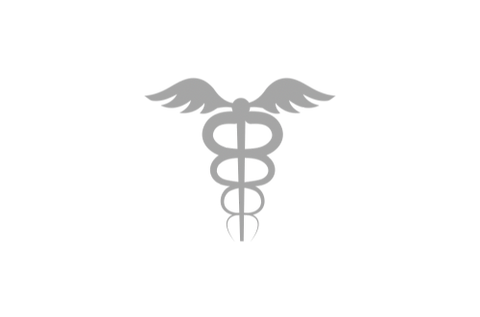Advancing Health Equity

Healthy People 2020 defines health equity as the “attainment of the highest level of health for all people. Achieving health equity requires valuing everyone equally with focused and ongoing societal efforts to address avoidable inequalities, historical and contemporary injustices, and the elimination of health and health care disparities.”1
Health equity differs from conventional notions of equality which means everyone gets the same benefits from the same supports. As you will see in this image from the Ingham County Health Department, equality and equal treatment result in unequal outcomes.2 With health equity though, we adjust to ensure everyone gets the support they need to attain their full health potential. We can also achieve greater health equity by removing the causes of inequity and addressing those barriers that keep everyone from being as healthy as they possibly can.
Health inequities are unfair health differences closely linked to social, environmental, or economic disadvantages that adversely affect specific groups of people.
Meanwhile disparities are the measurable differences in health status between different groups of people that can be related to social or demographic factors like race, gender, income, or geography.
Public health literature indicates that our health is greatly impacted by our everyday environment, including where we live, grow, and play. This is why Healthy People 2030 promoted by the US Department of Health and Human Services prioritizes not just health conditions or health behaviors but also the social determinants of health.3
The Center for Disease Control and Prevention (CDC) recognizes the above pictured factors from education access and quality to economic stability as social determinants of health. The conditions of our built environment and communities affect a wide range of health and quality-of-life risks and outcomes.4
At the home of On Your Side Health in North Carolina, for example, we can see in the 2018 NC Health Equity Report that African American and American Indian populations fare worse than the white reference population in key health metrics across age. Disparities are even apparent with severe illnesses like cancer and heart disease. As an example in the report, the prostate cancer death rate for African American men was 2.8x higher than the rate for white men over this time period.5

At On Your Side Health, we believe advancing health equity requires a commitment to environmental justice. This is why we support efforts to train health professionals to understand the core environmental determinants of health (EDHs). EDHs refer to physical, chemical, and biological factors external to a person, and all related behaviors.
We have worked extensively with those impacted by environmental contamination in North Carolina as well as Veterans and other individuals impacted by Department of Defense (DoD) contamination. In view of our experiences, we fundamentally support the Pan American Health Organization's 2030 Agenda which includes their Sustainable Development Goals with EDHs in mind, including addressing the issues of water, sanitation and hygeine, air quality, chemical safety, and climate action.6 We endorse the following priorities related to EDHs: clean water and sanitation, affordable and clean energy, sustainable cities and communities, climate action, and responsible consumption and production.6
Environmental Determinants of Health
In view of the importance of EDHs to building a healthier future, we support efforts to breakdown barriers to environmental health education, including and especially to physicians. Many clinicians see patients facing health challenges related to the environment on a daily basis including heat illnesses, air pollution effects on respiratory function, chemical toxicity, and the spread of vector-borne and zoonotic infections which is intimately intertwined with climate change. Despite these prevalent concerns, physicians routinely express alarm at their lack of preparation to care for and counsel patients experiencing such environmental impacts.7
We fundamentally believe that screening for a history of military service and environmental determinants of health should be a routine part of patient social history collected by clinicians. We support training physicians to collect an expanded social history which highlights social and environmental determinants of health through a framework adapted from a 2014 New England Journal of Medicine viewpoint entitled, "Rethinking the Social History."8,9 We agree with the Viewpoint published in the Journal of the American Medical Association (JAMA) in 2024, which highlights the need for this expanded social and environmental history, stating "concurrent understanding of both social and environmental factors could help clinicians define the patient’s unique vulnerability to environmental stressors, allowing for an individualized and equity-centered approach aimed at strengthening patient host resilience while setting in motion steps to reduce environmental exposures."8
Our Patriots have experience consulting with Veterans related to their toxic exposures and addressing health effects from PFAS contamination. Building on our expertise, we are proud to launch two new projects, which will recognize Medical Patriots and PFAS Prevention Medical Champions. We are deeply committed to improving the quality of care for our military, Veterans, and the broader Defense community individuals exposed to DoD contamination, including to PFAS. We are hopeful that both the Medical Patriot Project and our PFAS-related care project will advance health equity for the many Veterans and Americans exposed to DoD contamination, including to PFAS.
Motivated to Advance Health Equity?
Here are ways you can take action.
Local to Southeastern North Carolina
Sources
1. Disparities. Healthy People 2020. Retrieved February 24, 2021, from https://www.healthypeople.gov/2020/about/foundation-health-measures/Disparities
2. Health Equity and Social Justice. Ingham County Health Department. Retrieved February 24, 2021, from http://hd.ingham.org/DepartmentalDirectory/CommunityHealth,Planning,andPartnerships/HealthEquityandSocialJustice.aspx
3. Healthy People 2030, U.S. Department of Health and Human Services, Office of Disease Prevention and Health Promotion. Retrieved [date graphic was accessed], from https://health.gov/healthypeople/objectives-and-data/social-determinants-health
4. Social Determinants of Health. Centers for Disease Control and Prevention. Retrieved March 15, 2021, from https://www.cdc.gov/socialdeterminants/index.htm
5. Racial and Ethnic Health Disparities in North Carolina—North Carolina Health Equity Report 2018. Retrieved February 24, 2021 from https://schs.dph.ncdhhs.gov/SCHS/pdf/MinorityHealthReport_Web_2018.pdf
6. Environmental Determinants of Health. Pan American Health Organization of the World Health Organization. Retrieved February 19, 2025 from https://www.paho.org/en/topics/environmental-determinants-health
7. Azan, Alexander. "Primary Care needs to rise to the challenge of caring for patients during climate disasters." BMJ 2023; 383: December 5, 2023 p2864. Available at: https://www.bmj.com/content/383/bmj.p2864
8. Rabinowitz, P and Barry, M.. "Environmental Determinants of Health--Time to Redefine the Social History?" JAMA. 2024; 332(22): 1881-1882. Available at: https://jamanetwork.com/journals/jama/fullarticle/2824422
9. Behforouz et al. "Rethinking the Social History." N Engl J Med 2014; 371:1277-1279. Available at: https://www.nejm.org/doi/10.1056/NEJMp1404846









